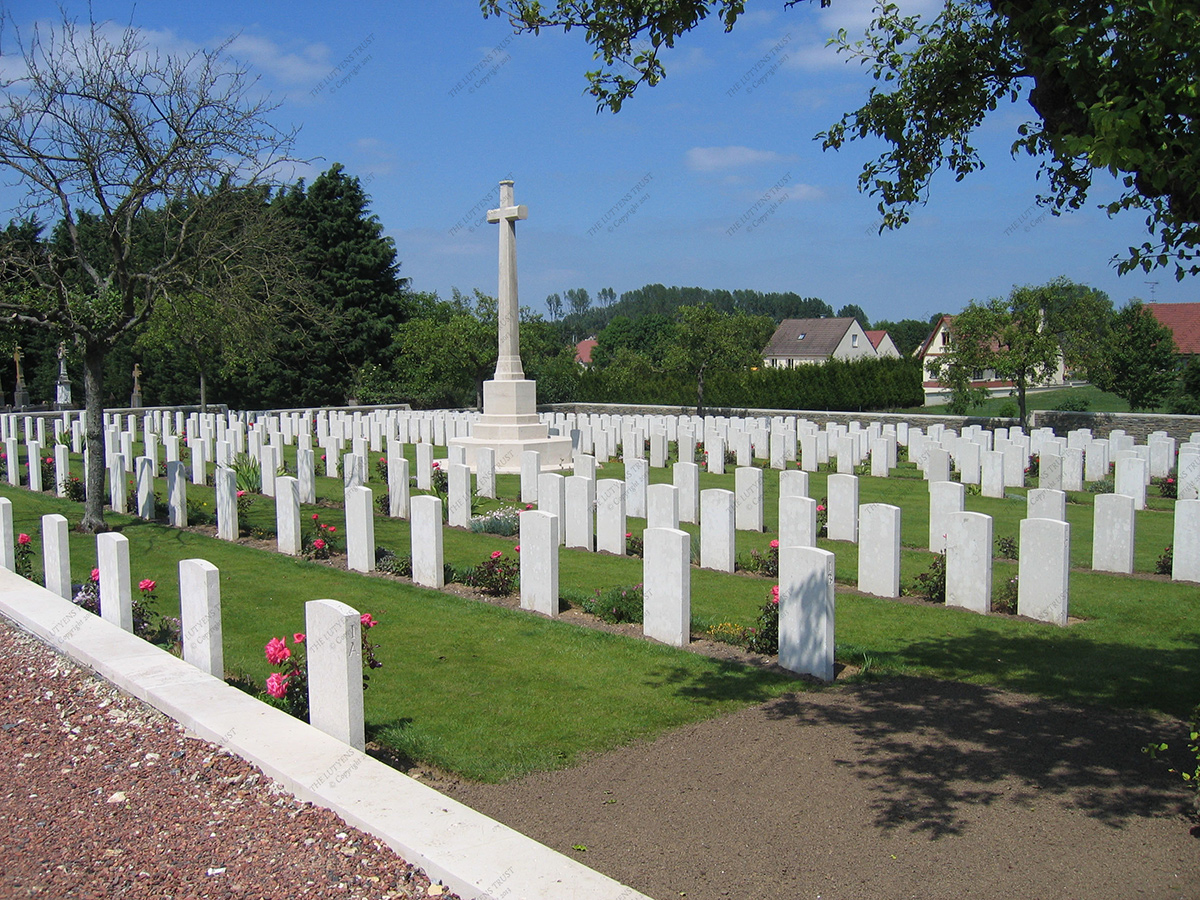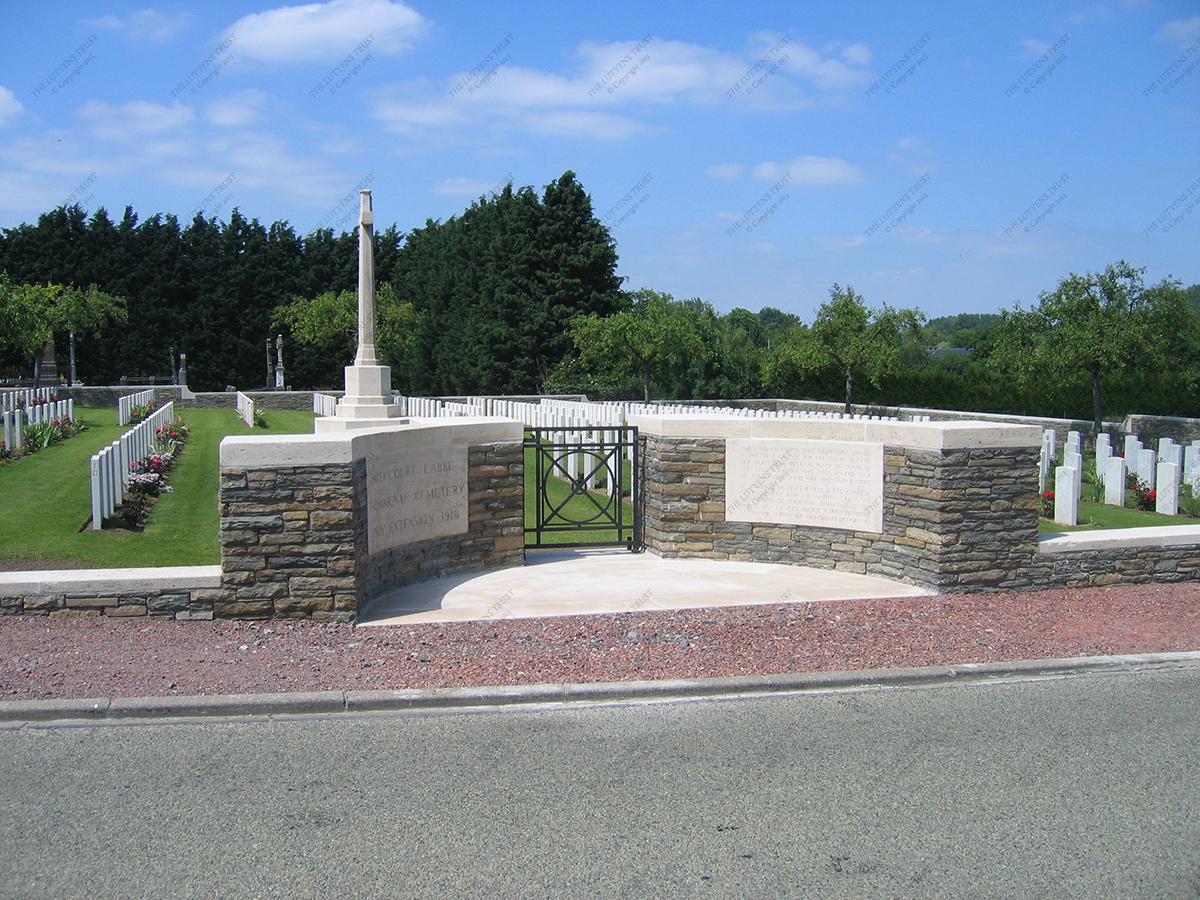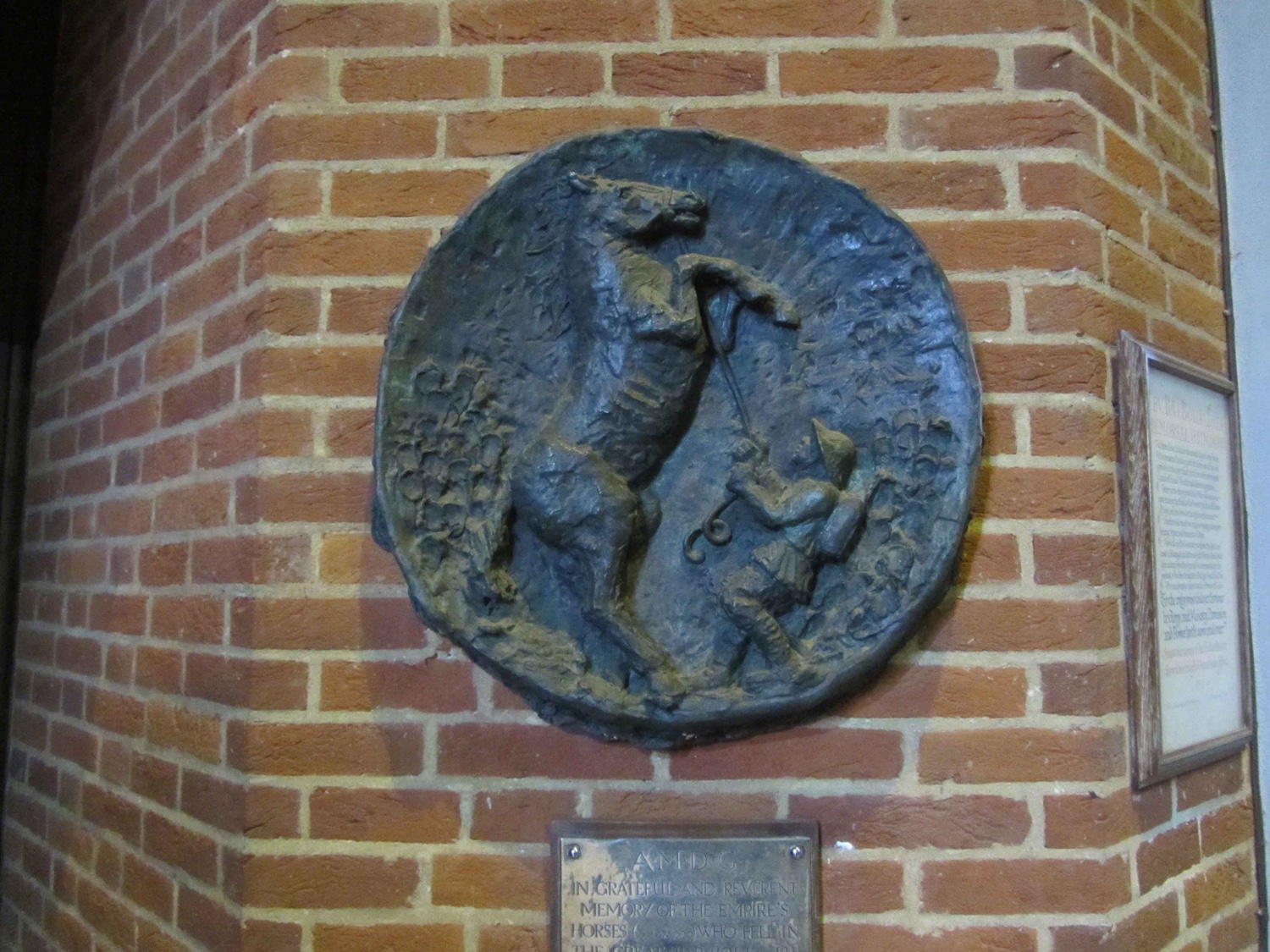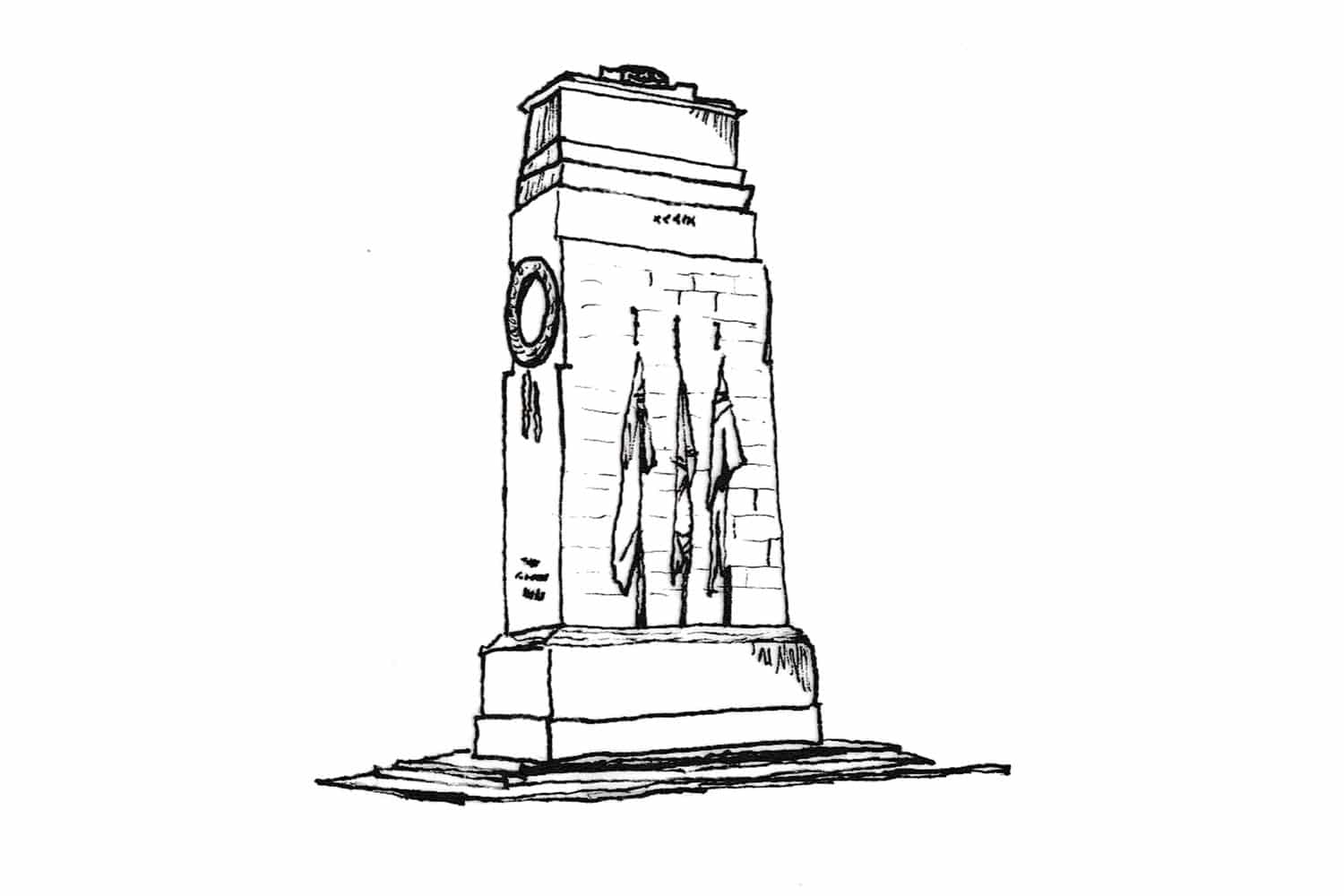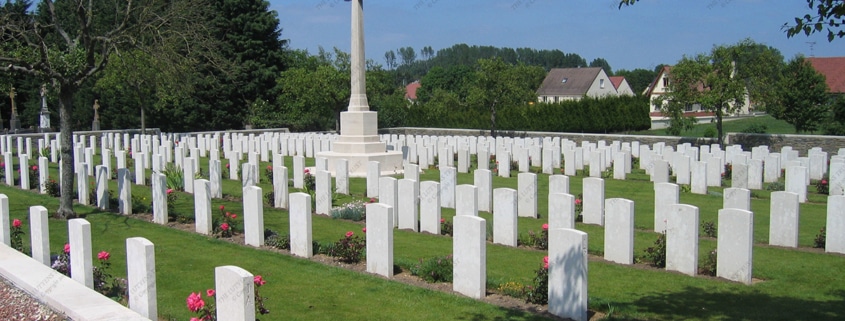
Description
The cemetery was constructed in August and was used by the Casualty Clearing Stations. The cemetery was closed after the German advance, and battle units made use of it in 1918. The design by Lutyens and Hutton primarily concerned the placement of the Cross of Sacrifice and the entrance, which consists of a semicircular wall with a gate- way. It is striking that the Cross of Sacrifice is situated on the entrance axis but is deliberately not directed toward the entrance but to the graves. The entrance is two steps higher than the field of graves and the stairway issues out on to a stone plateau. The field is surrounded by a wall that jumps in height, following the lie of the land, as Lutyens instructed, and is made of stone elements similar to the situation at Méaulte Military Cemetery. In the southwest corner, the height of the field is equal to that of the wall and the ground is directly accessible from the road. The cemetery is planted with crabs. (Geurst, 2010, p.364)Bibliography
Geurst, J. (2010) Cemeteries of the Great War by Sir Edwin Lutyens. Rotterdam: 010 Publishers.Also Cited In
Listing Grade
Coming soonListing Reference
Client
Imperial War Graves Commission
